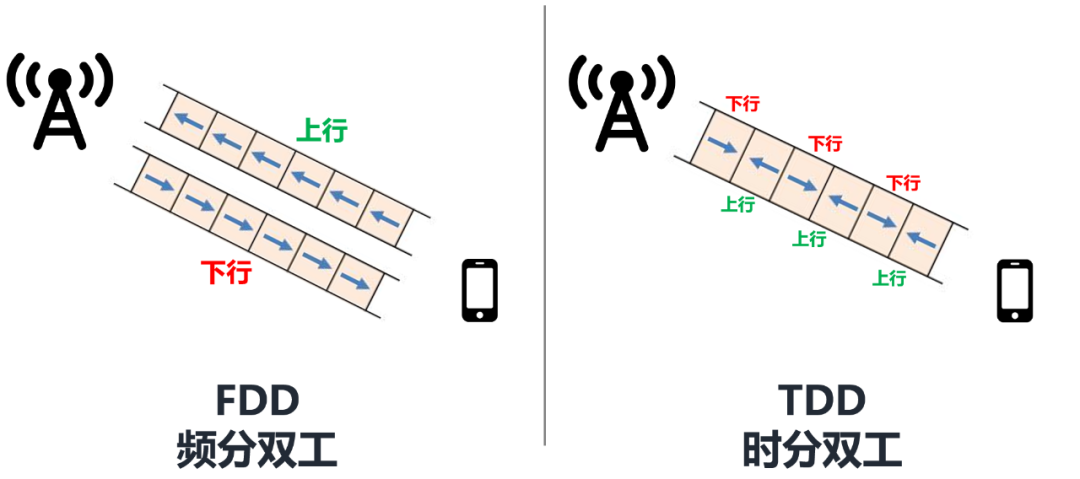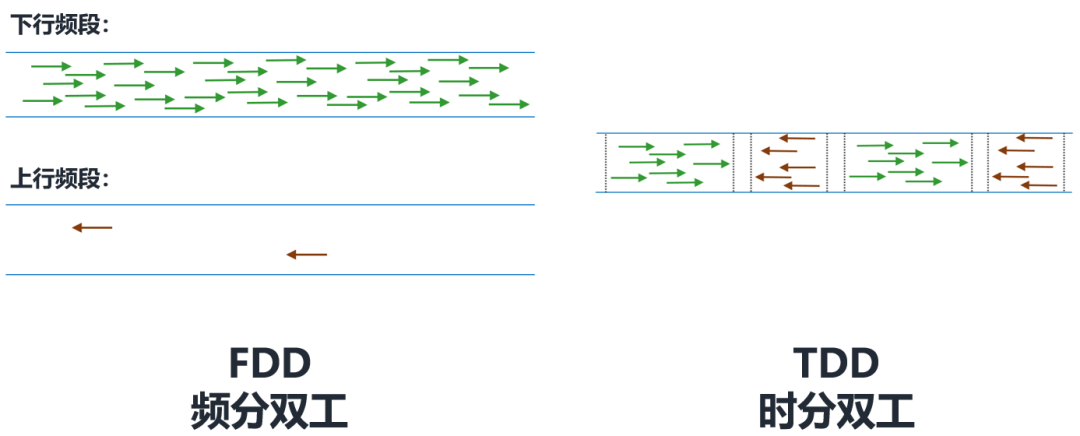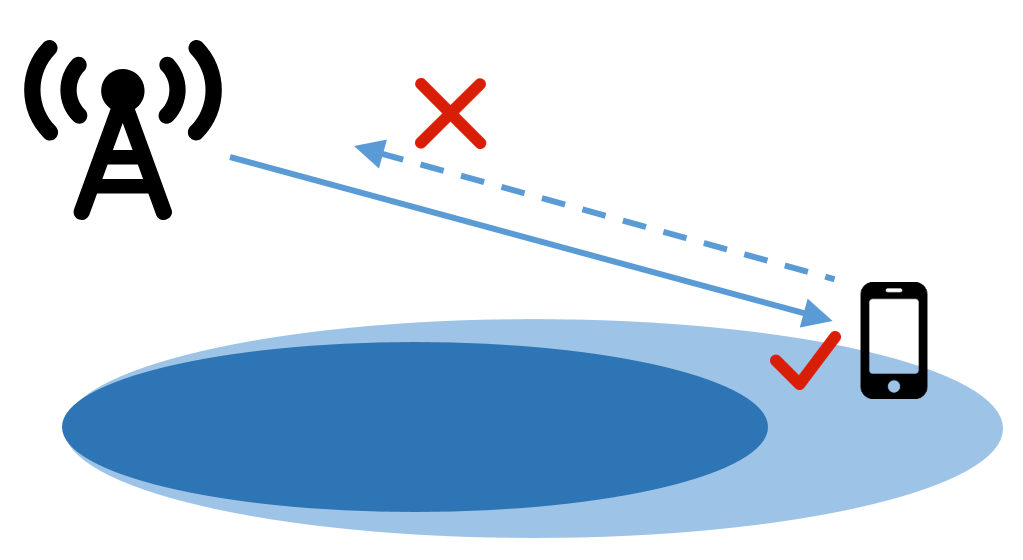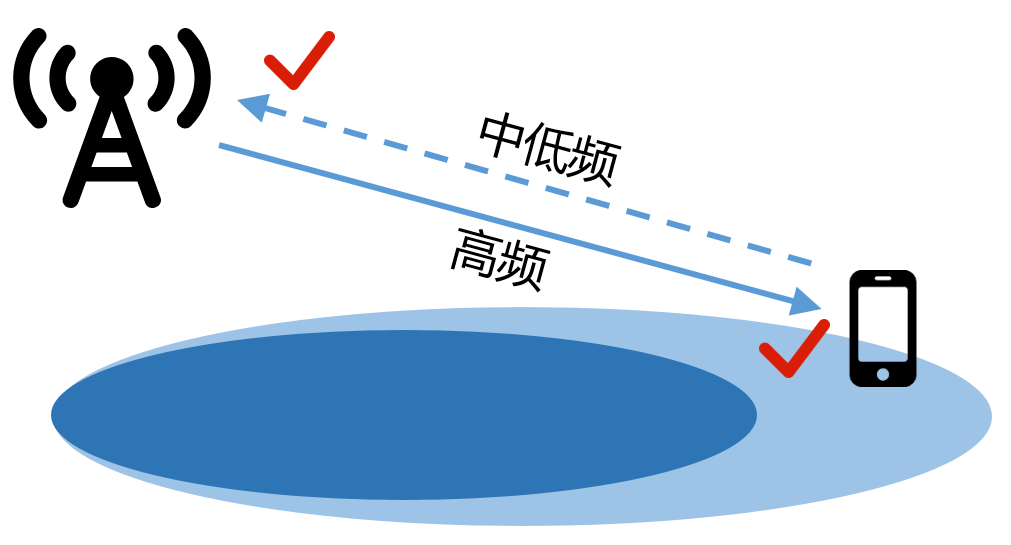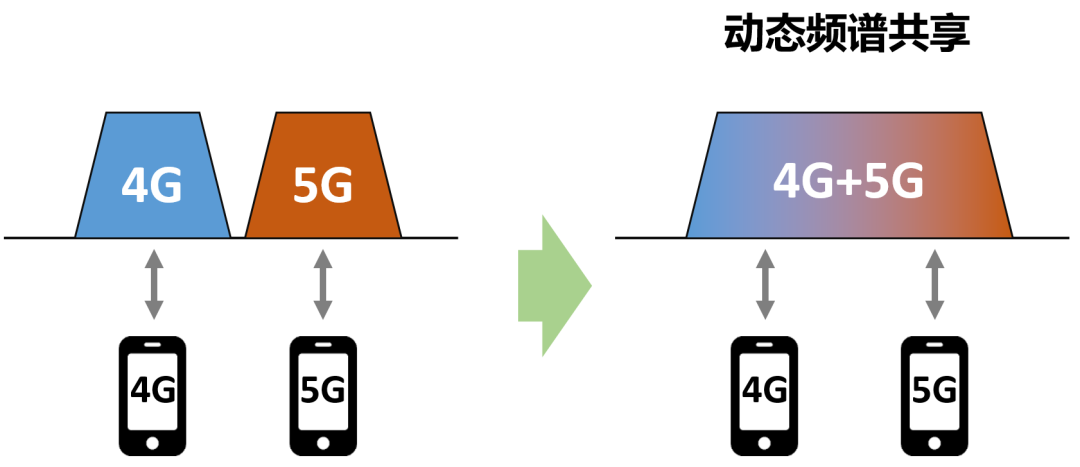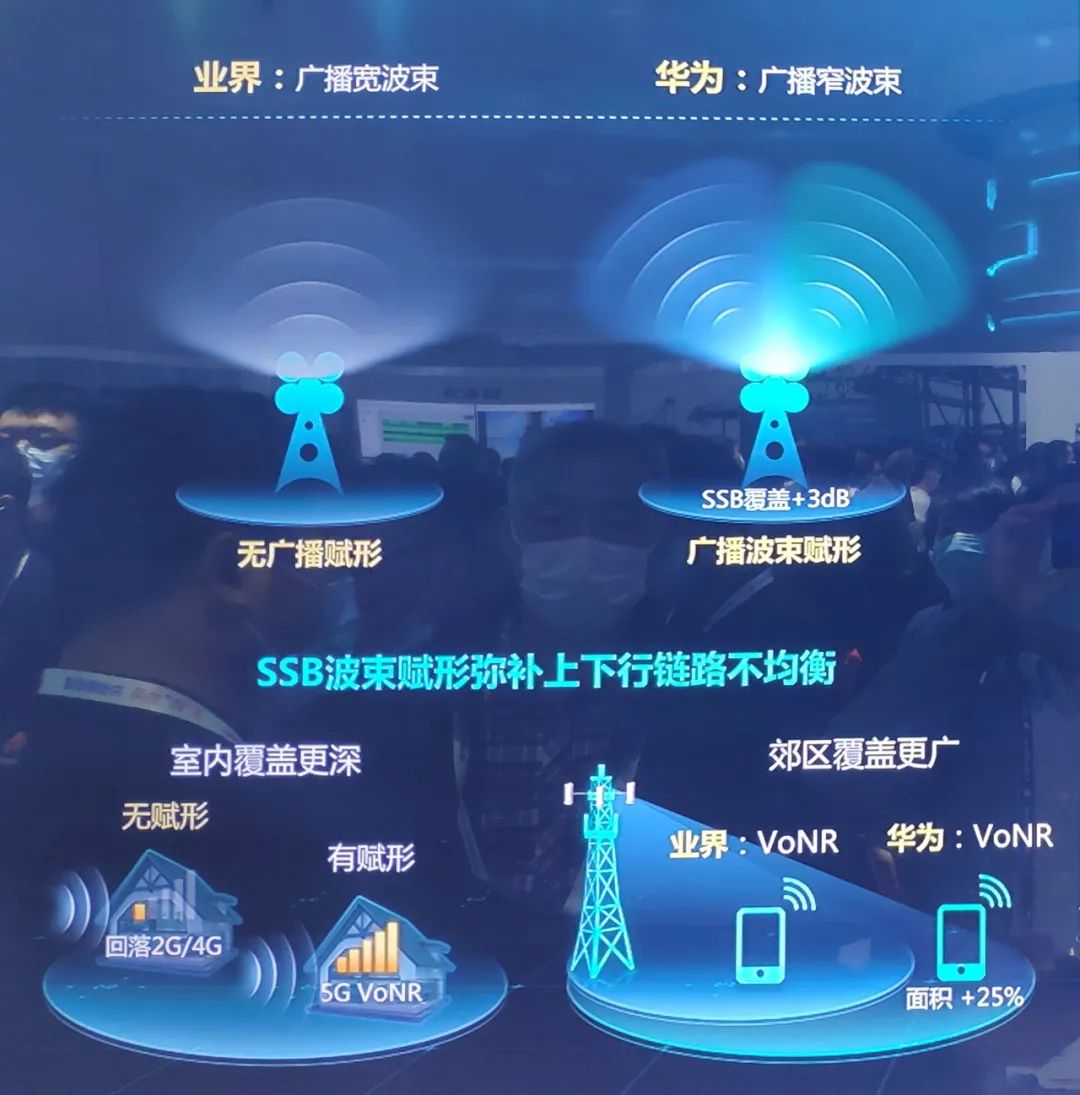
Source: Fresh Date Classroom (ID: xzclasscom)
Currently, the global 5G network construction is in full swing. According to statistics, as of August 2020, there are 92 commercial 5G networks worldwide, covering 38 countries and regions.
These 5G networks mostly adopt the TDD standard.
As you may know, the 4G LTE network is divided into FDD LTE and TDD LTE.
The so-called FDD and TDD refer to Frequency Division Duplex and Time Division Duplex, respectively.
FDD Frequency Division Duplex uses two different frequency bands, one for the uplink from the mobile phone to the base station, and the other for the downlink from the base station to the mobile phone.
TDD Time Division Duplex uses the same frequency band for both uplink and downlink transmissions, distinguishing them by different time slots.
Clearly, compared to FDD’s exclusive “lane” method, TDD must consider uplink and downlink time slot allocation and interference suppression, making its technical implementation more complex.
However, the spectrum resource utilization rate of FDD is not as good as that of TDD.
Mobile communication services exhibit an imbalance in uplink and downlink data traffic characteristics. For example, when watching videos, the downlink data volume is large, but the uplink is small. If FDD is used, the resource allocation is not flexible, and the frequency band occupied by the uplink is mostly idle.
On the other hand, TDD supports flexible allocation of uplink and downlink time slots, so in scenarios with high downlink traffic, more downlink time slots can be allocated, and vice versa.
In the 4G era, the number of FDD LTE networks globally outnumbers TDD LTE networks.
However, in the 5G era, the situation has changed.
5G requires higher rates and larger frequency bandwidth. In high frequency bands, it is very difficult to find two symmetrical large bandwidth frequency resources as in FDD. The lower frequency resource utilization of FDD is simply unacceptable.
Moreover, for the massive antenna technology (Massive MIMO) adopted by 5G, TDD has better signal reciprocity and is easier to design.
Thus, considering various factors, major operators have turned to TDD when deploying their 5G networks. This really confirms the old saying: “Thirty years in the east, thirty years in the west.”
▊ What Is High and Low Frequency Networking
Is the story over here? Certainly not.
5G’s adoption of TDD high frequency implies it must face a tricky issue—insufficient network coverage capability.
Insufficient network coverage capability primarily arises from inadequate uplink capacity.
For downlink, from the base station to the mobile phone, there are generally no problems due to the higher transmission power of the base station and support from technologies like beamforming.
For uplink, from the mobile phone to the base station, the mobile phone’s antenna power is very low, making the signal propagation distance short and limiting the communication distance between the mobile phone and the base station (i.e., limiting the coverage area of the base station).
Currently, 5G uses higher frequency bands than 4G, such as 3.5GHz and 4.9GHz, which have greater penetration loss and faster signal attenuation. The impact on coverage capability is more pronounced with TDD.
So, how can we solve this problem?
Experts have considered decoupling uplink and downlink using SUL (Supplementary Uplink) technology.
The idea behind this technology is quite simple: since the high frequency uplink is insufficient, we can “borrow” frequency resources from the mid-low frequency bands to serve as the uplink channel!
The mid-low frequency has less penetration loss and greater propagation distance, which can effectively help 5G improve its coverage.
Although the bandwidth of mid-low frequency is smaller and cannot meet the Gbps large bandwidth service demand, it can fully cope with most scenarios, including mobile communication.
Continuing to think, which mid-low frequency band resources are suitable for “borrowing”?
Taking 2.1GHz as an example, currently, China Unicom and China Telecom have 25MHz and 20MHz of spectrum resources in this band, respectively. These resources are temporarily occupied by the 4G LTE network but are the first choice for frequency band reallocation.
Telecom and Unicom’s 2.1GHz frequency range
We cannot adopt a one-size-fits-all approach to directly allocate these resources for 5G NR, as it would affect the user experience of current 4G network users. However, we can use Dynamic Spectrum Sharing (DSS) technology to allow 4G/5G networks to share this spectrum resource.
In this way, we form a “Mid-Low Frequency FDD NR + High Frequency TDD NR” networking method, which can be called “High and Low Frequency Networking”.
Traditional SUL auxiliary uplink uses 3.5GHz for uplink and downlink at mid-close distances. When the distance increases and 3.5GHz uplink cannot reach, SUL is activated, using 2.1GHz to replace 3.5GHz for uplink.
Traditional SUL auxiliary uplink
This means that for most of the time (at mid-close distances), the auxiliary uplink is idle.
Thus, Huawei proposed the “Super Uplink”. In other words, at mid-close distances, the auxiliary uplink resources are also used in conjunction with the TDD primary carrier to rotate uplink data, enhancing uplink capacity.
This is undoubtedly a very practical idea, breaking the limitation that carrier aggregation must be “bundled” with spectrum.
Additionally, Huawei has uniquely introduced FDD 5G broadcast channel narrow beam technology and TDD 5G broadcast channel intelligent optimization technology.
FDD 5G broadcast channel narrow beam technology differs from the traditional wide beam, using two narrow beams for polling, which can increase coverage by 3dB and enhance VoNR service depth and breadth coverage.
Broadcast channel narrow beam technology
TDD system broadcast channel intelligent optimization mainly shapes the beams of broadcast channels, polling and scanning, using AI to intelligently recognize coverage scenarios and user distribution, providing various beam combinations for intelligent matching to optimize user experience and spectrum efficiency.
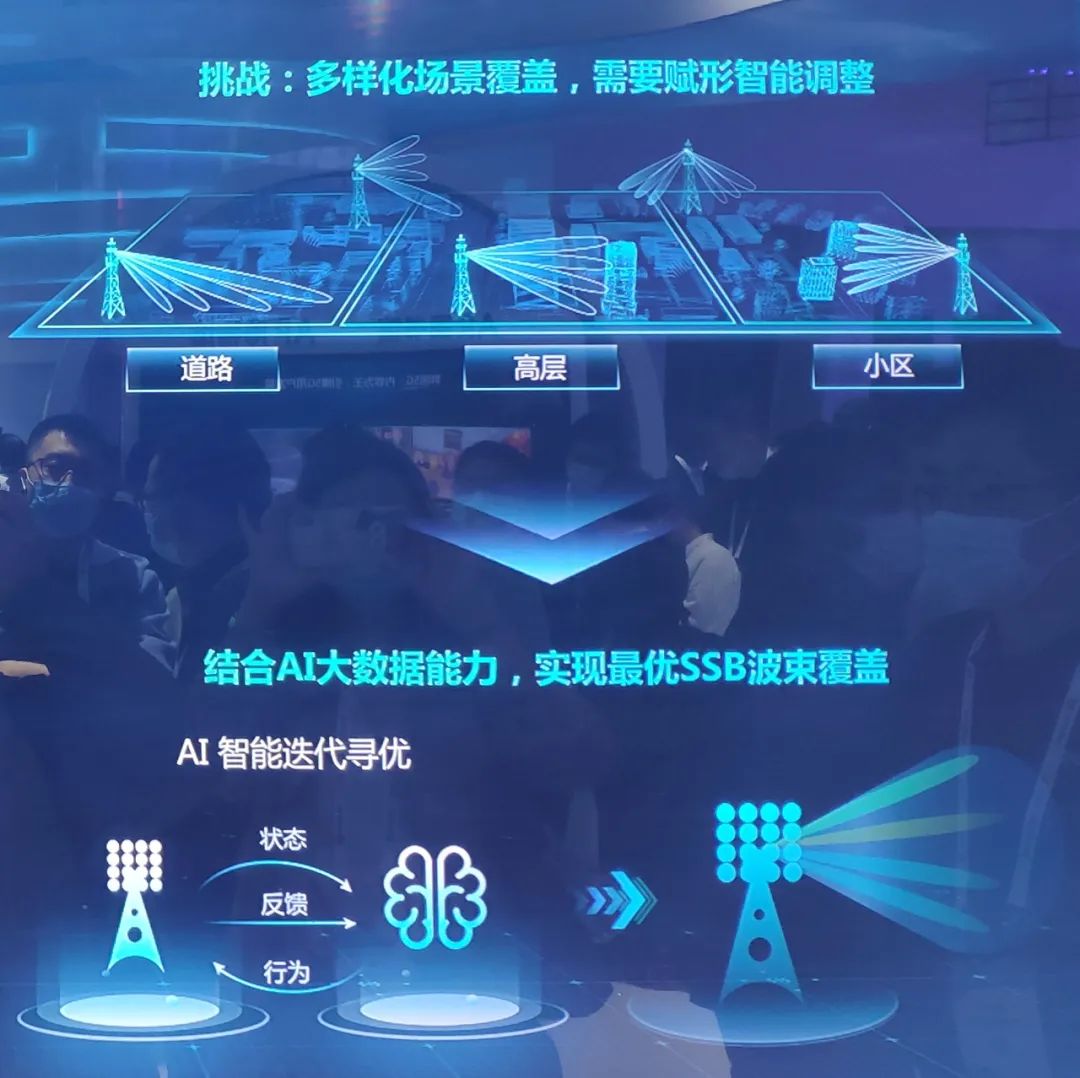
Broadcast channel intelligent optimization technology
▊ Standard Formulation and Terminal Support
Whether the “Mid-Low Frequency FDD NR + High Frequency TDD NR” networking method can be implemented depends on whether the standards allow it and whether the terminals support it.
Although TDD NR has always been the preferred option for operators and equipment manufacturers, FDD NR has not been forgotten by standard formulators.
On July 3, 2020, the 3GPP R16 version standard was frozen. This version comprehensively enhances the 5G 2C and 2B scenarios, including enhancements for FDD NR.
Currently, the standardization work for NR/DSS FDD large bandwidth has been completed, including 2.1GHz NR FDD and 700MHz NR FDD.
Moreover, large bandwidth downlink carrier aggregation (CA) and auxiliary uplink (SUL) under FDD have been initiated and are actively promoted.
In terms of terminals, mainstream chips, including those from Huawei and Qualcomm, fully support 3.5G/2.6G/2.1G/1.8G NR, with some supporting 700MHz NR. By 2021, support for large bandwidth FDD NR and large bandwidth SUL in 5G chips will also be realized.
▊ The Role of High and Low Frequency Networking
In the future, for different demand scenarios such as urban and suburban areas, the most reasonable deployment method for 5G networks is to achieve large bandwidth through TDD NR and to achieve supplementary coverage and uplink enhancement through FDD NR.
5G FDD NR not only compensates for the uplink shortcomings of TDD NR and enhances coverage in rural areas, but also strengthens deep coverage in urban areas.
Urban macro stations using a combination of high and low frequencies can improve outdoor coverage rates. Stronger penetration capabilities can help cover indoors, saving investment in 5G indoor distribution systems.
Moreover, through collaborative operation and maintenance, it is possible to achieve energy-saving goals by putting parts of the network to sleep during nighttime or low-load periods while ensuring stable network KPI.
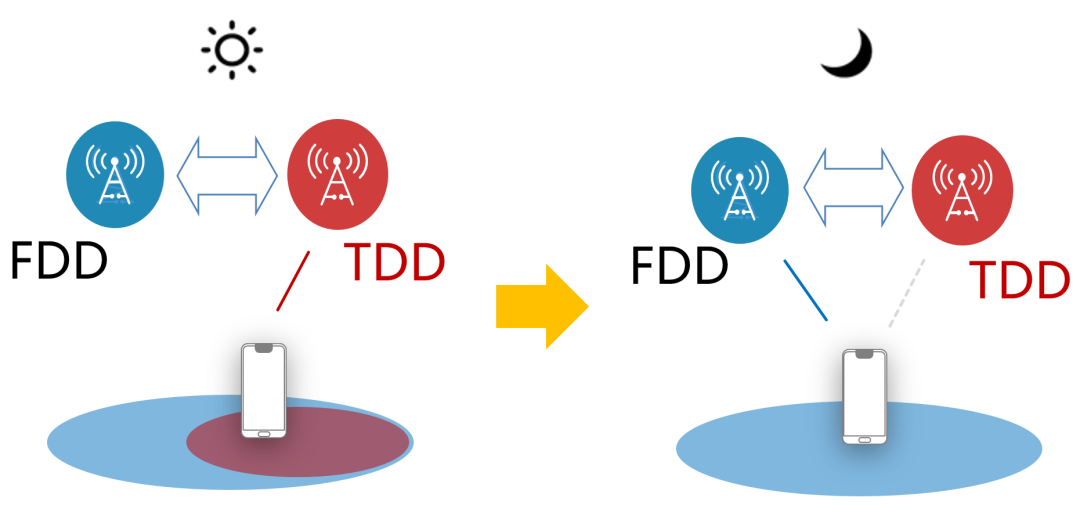
In summary, high and low frequency networking fully combines the advantages of TDD large bandwidth and FDD long coverage, making it a very “down-to-earth” 5G networking strategy.
That’s all about 5G high and low frequency networking. Thank you for your patience in reading!
Editor: Xiao Huai Bing


